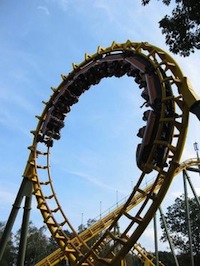Most private investors these days prefer to hold bond funds rather than individual bonds, either via passive ETFs or, if heroically optimistic, through managed bond funds.
A bond fund obviously holds lots of different bonds of various yields and maturities, which enables it to avoid getting slammed by the Trade Descriptions Act.
For instance, the popular iShares FTSE All Stocks Gilt (Ticker: IGLT) consists of 39 different gilts. As the name suggests, it includes all sorts, too, from short gilts that are due to mature in the next couple of years to long-dated issues that won’t mature until after I’ve received my bus pass.
How on Earth, I hear you cry, are you supposed to work out by how this baby will fall in value if interest rates rise?
Happily, it’s easy to get a rough idea by using the same factors that we employed in working out how bond prices fall when yields rise. Namely the yield to redemption, the modified duration, and a hypothetical interest rate hike.
And handily enough, iShares provides you with easily accessible data averaging out the yield and duration of all the bonds in each of its bond ETFs’ portfolios.
By using this data, you can calculate how your bond fund will fare in a variety of different scenarios.
For example, for the IGLT fund as I write:
- The yield to maturity is 1.64%
- The modified duration is 9.46
If the yield to maturity were to rise to 3%, the price of the fund would fall:
1.36*9.46 = 12.9%
Remember that a bond fund is constantly changing as short issues mature and are redeemed and new long-dated bonds enter the portfolio (or as traders buy and sell bonds in the case of an active fund).
Over time a fund will therefore tend to self-correct as interest rates rise, as new and higher-yielding long-dated gilts enter its portfolio.
Should you sell your bond fund before prices fall?
The steady refreshing of a bond fund’s holdings over time doesn’t mean prices can’t fluctuate in the shorter-term, however.
IGLT has risen about 13% since the start of 2011, as rates have fallen. That could be reversed just as quickly.
However in our view most passive investors should probably not sell their bond funds trying to second guess the market, but rather let regular rebalancing work its magic over time.








Comments on this entry are closed.
Excellent post. Investors need to know this info!